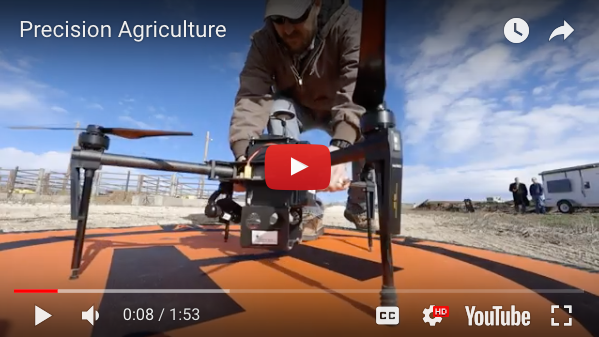Texas A&M AgriLife Research Seeks to Reduce Use of Antibiotics in Livestock

AgriLife Research Targets Feverish Cows With Drones
BUSHLAND, Texas – Scientists within The Texas A&M University System are testing new technologies at a feedlot in the Texas Panhandle to find ways to reduce the use of antibiotics in livestock and give urban millennials the kind of drug-free meat they demand.
Lately, drones equipped with thermal imaging cameras have been buzzing over a research feed lot near Amarillo, as scientists test methods to identify feverish animals. By singling out only sick cattle for treatment, scientists from Texas A&M AgriLife Research can treat only the ones in need of medication, instead of relying on the practice of injecting the entire herd with antibiotics.
See a video from Bushland about Texas A&M AgriLife Research’s work at The Texas A&M University System Web Page
Small, remote-controlled and unmanned aerial vehicles are already central to a type of technology-assisted farming known as “precision agriculture.” For years, drones have been used to monitor crops to help reduce water, fertilizers and pesticides.
But now they are being used with livestock. It is a natural extension of precision agriculture, Texas A&M University System Chancellor John Sharp said.
“Millennials are getting blamed all the time for destroying industries, but in this case, they are creating one,” Chancellor Sharp said. “Demand for antibiotic-free meat and ingenuity from Texas A&M AgriLife Research scientists have led to some very exciting technology and a new segment of precision agriculture.”
Dr. Brent Auvermann, a professor and center director at Texas A&M AgriLife Research in Amarillo, said drones are being used more than ever nowadays to address issues of modern life.
“By taking pictures and images of different kinds from a long ways away, we can tell what needs to be done and go do it,” he said.
The use of drones to pick out sick cattle isn’t AgriLife Research’s only way to spot sick livestock. Scientists in College Station and the Panhandle also are experimenting with cameras and artificial intelligence to identify ailing animals based on behavior.
The efforts with drones and artificial intelligence in the heart of the world’s beef industry are just a couple of examples of the wide scope of work being done by experts at Texas A&M AgriLife Research.
The state’s premier agricultural research agency, Texas A&M AgriLife Research led the nation in terms of federal grants for the sixth year in a row. Texas A&M AgriLife Research topped more than 200 universities across the country when it brought in more than $192 million in agricultural research expenditures in 2017, according to the National Science Foundation.
During a tour of the research feedlot in Bushland, Chancellor Sharp said, “Texas A&M AgriLife Research is the No. 1 research organization in the United States of American, which quite frankly is to say, the world.”
ABOUT TEXAS A&M AGRILIFE RESEARCH:
Texas A&M AgriLife Research is the state’s premier research and technology development agency in agriculture, natural resources, and the life sciences. Headquartered in College Station, AgriLife Research has a statewide presence, with scientists and research staff on other Texas A&M University System campuses and at the 13 regional Texas A&M AgriLife Research and Extension Centers. AgriLife Research helps to improve the productivity, efficiency, and profitability of agriculture. At the same time, we focus on conserving natural resources and protecting the environment. Web: AgriLifeResearch.tamu.edu
